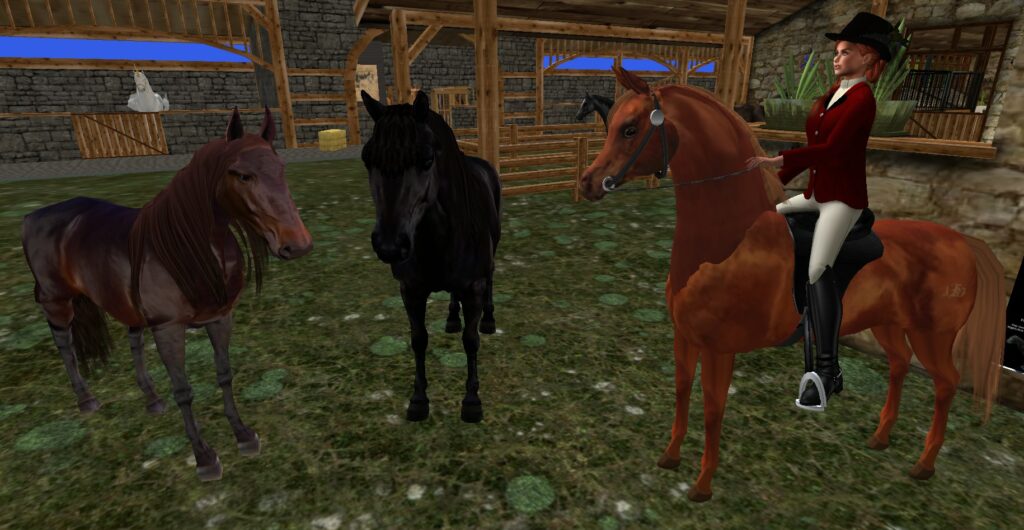
I own a real-life horse and am quite biased about to his best qualities. My horse lives at a nearby stable and we work together five days a week. He gets weekends off to play with his friends. At the stable, many teens have come through taking riding lessons. On occasion, I learn about their future aspirations. A number of them have expressed the desire to become a veterinarian to be able to work around horses and other animals. Never have I heard anyone express an interest in animal research. Going into a STEM or scientific research career seems to be hardly anyone’s goal in life.
This observation, whether accurate or not, led me to a non-satirical but somewhat Swiftian modest proposal. Why not find out about the pets our children cherish (whether a horse or hamster) and get them to learn about the scientific research that is done about their pet. This might be a route to engagement.
Taking horses as an example, below are some resources about horses that I’d use to build from curiosity to engagement.
A Pop Quiz – Horses are mammals and as such have similar anatomy to us, humans, but due to evolution, we are quite different. Chose an answer to this question. The answer follows so don’t look ahead.
Which one of the following organs is not found in a horse’s body
- gall bladder
- appendix
- spleen
- pancreas
Horses do not have a gall bladder. Because horses evolved to eat constantly there is no need to store bile, produced by the liver, that is used to digest lipids. Horses do have a spleen, pancreas and appendix. The appendix, called the cecum and unlike the one in humans, is large and an important part of the digestive tract.
Something Visual – A good place to start learning about horses is from the PBS special Equus: Story of the Horse. The show is hosted by anthropologist Dr. Niobe Thompson and is a “two-part adventure around the world and throughout time to discover the origins of the horse.” Dr. Thompson has had an interesting career so this special both tells about horses and shows how someone can be engaged with horses as a career.
Questions – The PBS special shows that humans and horses have worked together for thousands of years. So, where and when did people first ride horses? A Google search provides a first level answer. Recent research has placed the location where horses were first domesticated in a “region in southern Russia, near the intersection of the Volga and Don Rivers.” This “cattle-herding region already had indirect archaeological evidence of horse domestication, but the new DNA research now shows that modern domestic horses can be traced to equines living here between 4,700 and 4,200 years ago.” (Dzombak). This popular article by Dzombak leads us to the original research by Librado et al and the original research has lots of detail about how the scientists figured out an answer.
Transitional Resources – There are many popular periodicals that deal with horses and my favorite is Equus. This is not a “horse sport” magazine that deals with jumping, eventing or dressage but it delves more into horse behavior and health. The original editor, Ami Shinitzky, described the magazine thus: “EQUUS serves as a bridge between the veterinarian and the horse owner, bringing to our readers the expertise of the nation’s leading authorities on the care and maintenance of the animal through the talents of writers who are able to translate often technical information into a language easily understood and rapidly absorbed.” These popular articles usually provide links to the original research.
Play – Since most people don’t own a horse, a virtual experience can help to engage. Horses to ride are available in Second Life. There are several sources of horses and here are three of them.
- I have had a horse from AKK Horse Ranch for a number of years. Their horses are mesh and work very well. You can try out a demo horse at their sim and their horses are available from the Marketplace.
- A somewhat more expensive but really nicely animated horse can be found at Bento Water Horse. Visit their sim or shop the Marketplace.
- Easy Rider horses are very inexpensive ($99L to start) and really nice. I’ve placed an Easy Rider Horse Vendor on the Science Circle sim if you wish to try out a free horse. I also recommend getting their riding boots as they align with the stirrups quite easily.

References
- A Modest Proposal, Jonathan Swift, 1729 (Text and Commentary)
- Pop Quiz, Equus, Issue 506, Autumn 2021, p. 12-14.
- Equus: Story of the Horse, Two part series on PBS Nature, first broadcast 2019.
- Niobe Thompson, Wikipedia
- Domestic horses’ mysterious origins may finally be revealed, Rebecca Dzombak, National Geographic, October 20, 2021.
- The origins and spread of domestic horses from the Western Eurasian steppes, P Librado, N Khan & L Orlando, Nature, October 20, 2021.
- Shinitzky quote, Equus (magazine), Wikipedia.
 |
| Visits: 26 |
